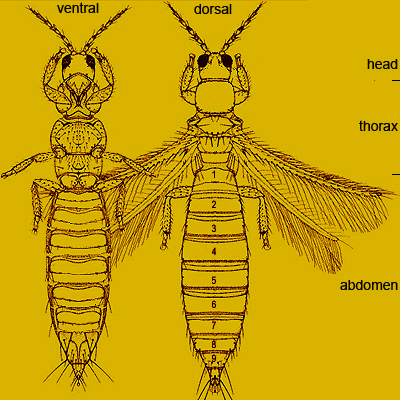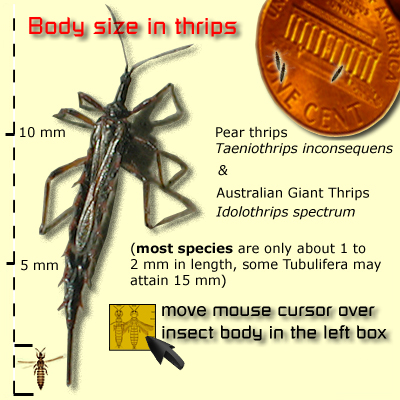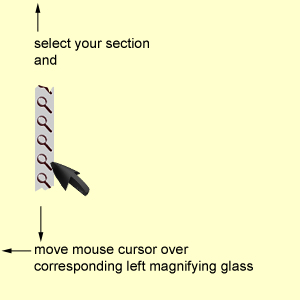| Particular attention is given to key characters, because it is essential that they be interpreted correctly. You can use additional photographs within the key when you are unsure of the character state discussed in the text. A double click on the character state thumbnail opens the related character state photograph and the mouse cursor will surround the important specific character state. | ||

|
 |
|
| (antecosta-campaniform
sensilla)
-> (cilia-craspedum) -> (cross
vein-furca) ->(gena-maxillary stylets)
-> (maxillary palps-ocellar setae) -> (ocellar triangle-posteroangular) -> (posteromarginal-setae) -> (spine-wing retaining setae) |
|
GENA:
The cheek on each side of the head, lying beneath the compound eyes. |
 |
GLANDULAR AREA: Areas
of cuticle with an iridescent, porous appearance that are assumed to
have some secretory function. |
||
HIND WING:
Posterior pair of the wings, arising on the craniolateral edges of
the metanotum craniale, tight to the fore wing base. |
||
LABIUM: Bilaterally-symmetric
and fused sclerites that form the "lower lip" or floor of
the mouth cone. |
||
LABIAL PALPS:
Paired sensory appendages attached to the labium. |
||
LABRUM:
An unpaired sclerite which forms the "upper lip" of the mouth
cone. |
||
MANDIBLE:
Only the left mandible is developed in larvae and adult thrips. This
is a blind stylet used to punch a hole in a leaf surface. |
||
MARGINAL
SETAE: Setae found at the margin of sclerites. |
||
MAXILLARY
BRIDGE: Endosceletal connection of the maxillary stylets
deep in the head capsule of some phlaeothripid species. |
||
MAXILLARY
STYLETS: Paired needle-like structures, elongate part of
the maxillae, developed from the laciniae. |
Gordh, G & Headrick,
D (2001): A dictionary of Entomology. CABI Publishing, Oxon & New
York, 1032 pp. |
Gullan, PJ & Cranston,
PS (1994): The Insects: An Outline of Entomology . Chapman
and Hall, London. 491 pp. |